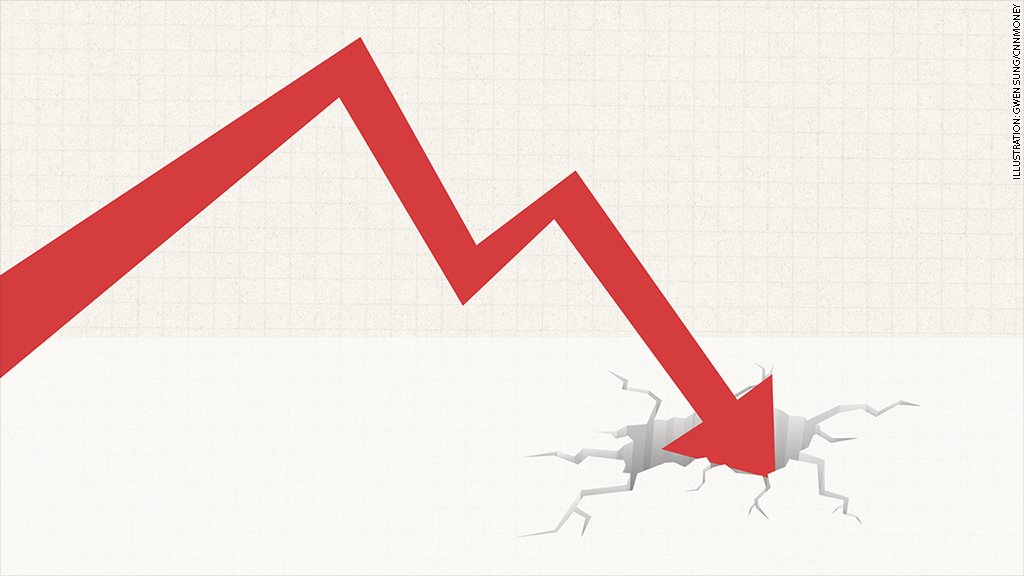
Investors are so nervous that they are basically willing to lose money when they buy some government bonds.
It's part of the latest fad in finance that's all the rage: "going negative."
The yields on government bonds in Europe and Japan have dipped into the uncharted waters of negative territory. That means buyers of those bonds are essentially taking a loss just to hold onto those assets. They think their money is better off losing a few cents than putting it elsewhere.
"It's basically a fee for fear," said Nicholas Colas, chief market strategist at ConvergEx. "Fear of deflation, fear of volactility in other capital markets and general fear of the known."
Related: World Bank cuts global growth forecast
Below zero: Just look at Switzerland, where the yield on bonds fell further into negative territory this week after the country's central bank dropped a bombshell on investors by scrapping a currency cap.
In addition to allowing the Swiss franc to trade freely against the euro, the Swiss National Bank lowered a key interest rate further into negative territory, from -0.25% to -0.75%. That's like a bank charging customers to park their money there instead of paying them interest.
Switzerland isn't alone in going negative. The yield on short-term government bonds of Belgium, Denmark, France, Germany, Japan, and the Netherlands are all sub-zero. Even short duration U.S. bond rates are barely above zero.
The Swiss central bank is trying to get people to spend and invest more instead of putting their money in the bank or in cash-like assets like short-term government bonds, but investors just keeping buying up these safe haven assets, sending yields even lower.
"The whole move is shocking. You have to take out a microscope to see the yields on a lot of this paper," said Peter Boockvar, chief market analyst at The Lindsey Group. "People are strangely willing to pay for liquidity."
Related: One U.S. dollar could soon equal one euro
No playbook for this: All of this is unprecedented in the history of modern finance. Yields of major government debt typically stay above water.
"It's a glaring warning sign of deflation. We've never really had deflationary fears throughout such a widespread part of the world before," said Phil Camporeale, a multi-asset specialist at JPMorgan Asset Management.
Central bankers and investors are still scarred by Japan's experience with deflation when a scary spiral in lower prices caused more than a decade of lost growth.
"The current system has many things to commend about it but the one thing that makes it brittle is deflation. If prices don't go up to encourage people to buy, their proclivity not to consume kicks in," said Colas.
"As a central bank you have to manufacture inflation otherwise the wheels come off the whole construct," he said.
Related: 3 red flags causing markets to panic
Europe is 'Jaw-dropping': Alarm bells went off when consumer prices shrank in the eurozone in December for the first time since the Great Recession.
Fearing deflation, the European Central Bank is set to launch a massive new stimulus program aimed at boosting growth.
But the ECB printing press is also knocking yields further into negative territory. The thinking goes that if Spain, with all of its economic problems, can sell five-year bonds at less than 1%, then German bonds at -0.05% aren't an awful deal, at least relatively speaking.
"It's a bit jaw-dropping. It all makes you wonder: Do we really have a functioning global banking system when rates are essentially zero?" asked Colas.


